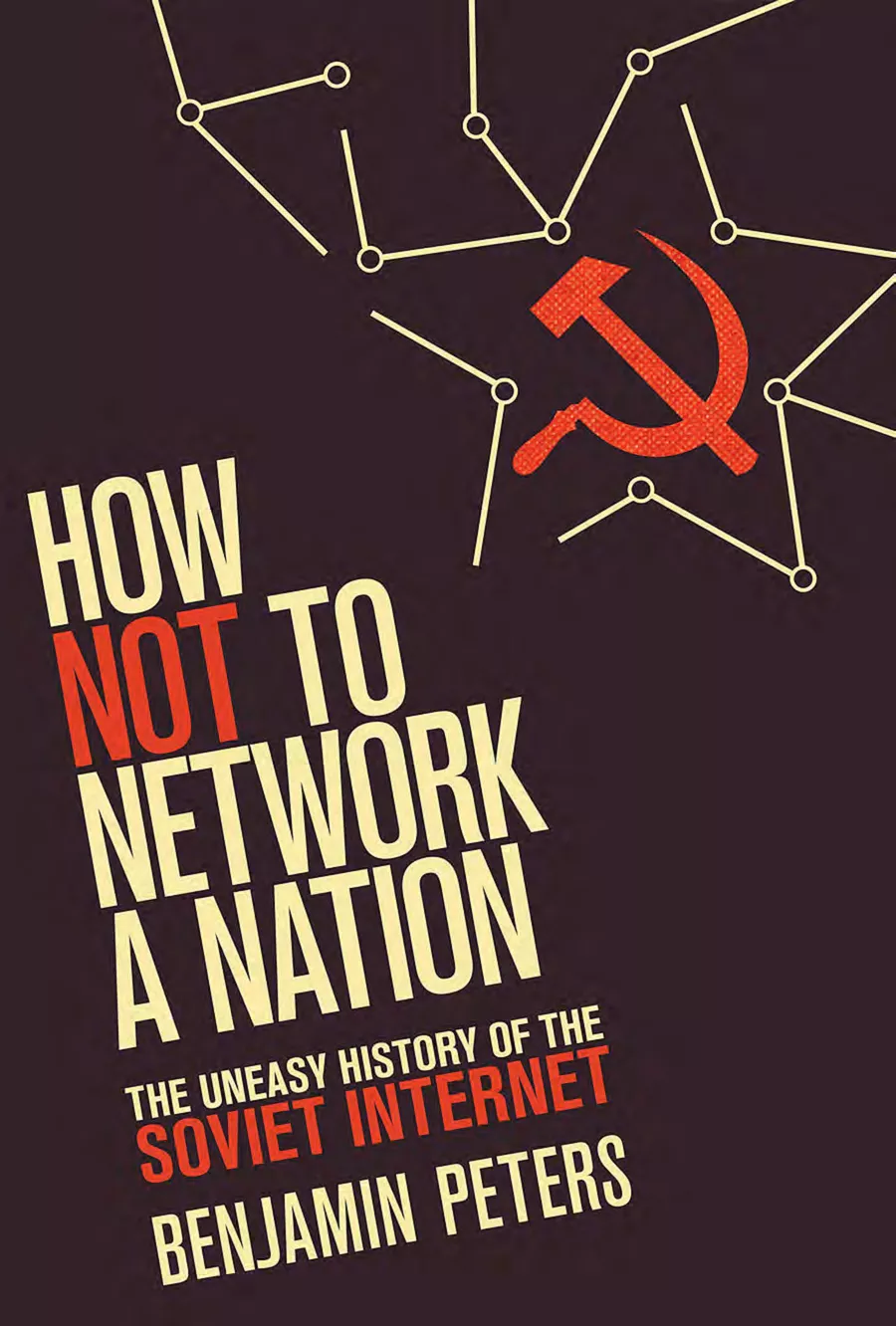The book is devoted to the history of computer networks and network technologies in the USSR in the 1960s ‑ 1980s. The author analyzes various projects of distributed information systems developed during this period, including the most ambitious project of the Nationwide Automated System (OGAS) by V. M. Glushkov (early 1960s). He defines the purpose of his research as the search for an answer to the question why the Soviet Union, despite all the efforts made and a fairly solid scientific and technological base, failed to build its own computing network comparable in capabilities to the American ARPANET network launched in 1969, which marked the beginning of the Internet. Peters' work, therefore, is a direct continuation of S. Gerovich's research.; in the introduction, the author explicitly stipulates that the starting point of his own research was familiarization with the article "Inter-No!"1, a draft of which Gerovich provided him even before its publication. The research was carried out at the intersection of the history of science and technology, social and political history.
From unpublished sources, the work uses documents from the Archive of the Russian Academy of Sciences, the National Library of Ukraine, the National Academy of Sciences of Ukraine, the Central Economic and Mathematical Institute of the Russian Academy of Sciences and the Kiev Institute of Cybernetics named after V. M. Glushkov of the NAS of Ukraine, including the personal archive of Glushkov himself, still kept at the Institute of Cybernetics, and the archive of his daughter V. V. Glushkova, separate CIA reports on the development of cybernetics and computer technology in the USSR, as well as interviews with 17 Russian and Ukrainian scientists associated at various times either with the OGAS project itself or with relevant institutes and scientific schools.
The structure of the book is arranged chronologically and includes a prologue, an introduction, five chapters and a conclusion. The first chapter describes the history of cybernetics from the mid‑1940s to the mid‑1960s, including in the Soviet Union. The second chapter is devoted to the emergence of economic cybernetics in the late 1950s ‑ early 1960s. The third chapter discusses the first attempts made during the same period to design a Union-wide computer network, primarily the project of an Economic Automated Control System (EAS) AI. Kitova (1959), which assumed the creation of a unified network of computing centers for both military purposes and for the management of the national economy. In the fourth chapter, the author traces the history of the development of the OGAS project and its truncated version of the EGSVC (Unified State Network of Computing Centers — a computer network project for information exchange and economic calculations, which did not involve major economic or administrative reforms) throughout the 1960s, describes (for the first time in English‑language literature) the biography of V. M. Glushkova, analyzes the complex history of the relationship between the Institute of Cybernetics and the Central Economic and Mathematical Institute of the USSR Academy of Sciences - the key development organizations of OGAS. Unsuccessful attempts to finalize these projects and achieve their implementation in the 1970s ‑ 1980s are described in the fifth chapter.
As Peters' research shows, the OGAS project and other similar developments have encountered strong resistance from several interest groups at once. The military was not interested in cooperation with civilian science, especially if it could entail a reform of the command and administrative system, which allowed them to siphon resources from other sectors of the national economy. Liberal economists, on the contrary, suspected that the creation of OGAS-type computing complexes would lead to further conservation of the command economy. The officials employed in the economic planning bodies were afraid to be left without work, because the developers of the OGAS expected that it would also automate the process of making managerial decisions. The economic nomenclature also feared that such systems could undermine the opportunities of the shadow economy. To this was added the rivalry between departments (primarily between the Ministry of Finance and the Central Statistical Office) for control over the future system. Finally, the OGAS project was not only ambitious, but also prohibitively expensive: in the initial version, it assumed the construction of several hundred regional and up to 20 thousand local computing centers, which were supposed to form a hierarchical system headed by the main computing center in Moscow. As a result, instead of a huge centralized computer network in the 1960s ‑ 1970s, several hundred industrial automated control systems (ACS) were created, which, however, were never integrated with each other.
Thus, the defeat of the developers of the "Soviet Internet" was caused not so much by the technological backwardness of the USSR or the shortcomings of the planned economy, as by an institutional factor. In the USA, in the same years, similar tasks were solved in a different context, since the American "military-industrial-scientific complex", formed during the Cold War, assumed, among other things, a fairly free exchange of ideas and developments between military and civilian science and industry, whereas in the post-war USSR, the "defense industry" actually parasitized other industries economy. The formulation of tasks also differed: according to the author, the American creators of the Internet had a much better idea of the device of the future network (the principle of packet switching) than its purpose. Soviet specialists, on the contrary, had a better idea of the future application of the system they conceived (operational exchange of economic information and its automated processing in computing centers of various levels), while the question of how to implement these plans remained unresolved. In addition, paradoxically, one of the obstacles to the creation of the OGAS in Soviet conditions was not so much the command and administrative system as the Soviet version of the "free market" - the shadow economy and the powerful administrative lobby generated by it. But in America, the SAGE and ARPANET systems were created within the framework of centralized state-funded projects, that is, in a sense, it was in a "socialist" way, and not in a "capitalist" way. It also confirms that the failure of the Soviet computer utopia and the rapid development of network technologies on the other side of the ocean were caused not by differences in socio-political systems, but by a more complex set of reasons.
Published in the abstract journal: Social sciences and humanities. Domestic and foreign literature. Ser. 5, History. 2018. No. 3. pp. 139-142.
1Gerovitch S. InterNyet: Why the Soviet Union did not build a nationwide computer network // History and technology. — 2008. — Vol. 24. — P. 335–350. For the revised Russian translation , see V. Gerovich . Inter-No! Why a nationwide computer network was not created in the Soviet Union // Inviolable reserve. — 2011. — No. 1. — Access mode: http://magazines.russ.ru/nz/2011/1/ge4.html . See also Mints M. M. Why the Soviet Union failed to overtake the United States in the development of computer technology and information technology: (Summary abstract) // Science in the USSR: modern foreign historiography: Sat. reviews and abstracts / RAS. INION. The Center of social. scientific.-inform. research Department of history. Ed. by O. V. Bolshakov. — M., 2014. — pp. 167-176.

